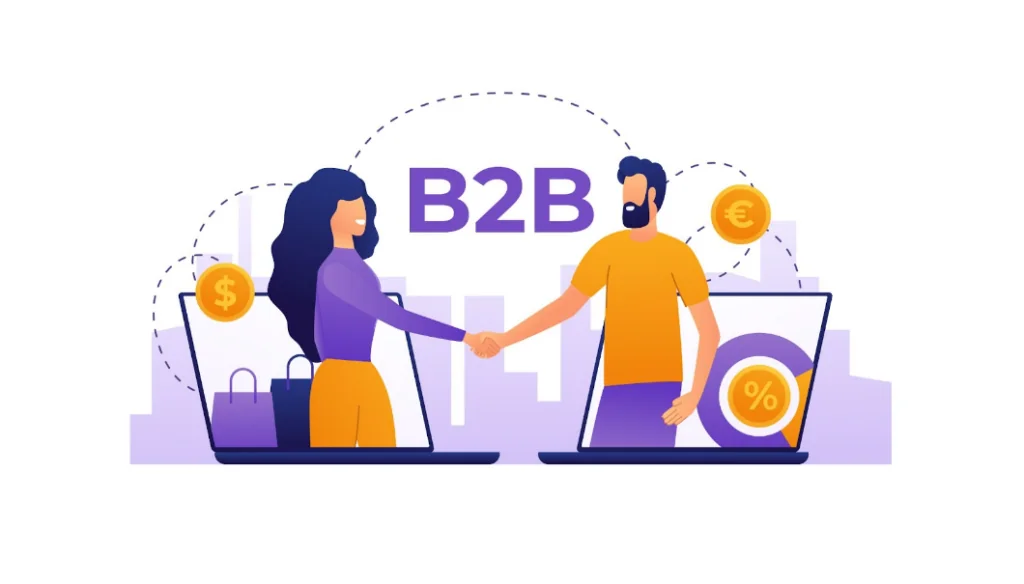The Role of Code Quality in B2B Sales: How to Showcase Your Software Value
Running a business in the digital era, modern companies heavily depend on software quality. Hence, quality code determining the reliability and performance of the software is of the utmost importance in a digital business environment. Poor software due to bad code can result in significant problems, losses, and even failures for organizations.
This is true for all types of businesses, and especially for B2B companies with complex networks, diverse projects, and demanding end users. All of these calls for thought-out and quality software capable of matching the complexities and needs of the B2B business environment.
In this overview, we’ll consider:
- What quality code is and why it’s important for B2B sales;
- Good code quality benefits for B2B sales;
- How to prove that your software is up to par; and
- How to maintain code quality.
What Is Code Quality?
Code quality is a measure programmers and developers use to define how well-written the source code is, and how well it adheres to industry best practices and coding standards. It’s used to estimate the value of a specific codebase, program, or software.
High-quality code is easy to read, understand, modify, and maintain. Written with diligence, it is less prone to errors and bugs and follows a consistent style. Good code should be optimized for performance and resource usage, with minimal overhead and processing time.
It should be testable, with clear and feasible test cases to validate its functionality, and compatible with different platforms and environments.
Why Is Code Quality Important for B2B Sales?

Since code quality is rather a notion from the tech world, most often than not, company owners and managers don’t directly link it to business results. In reality, though, it impacts business a lot. That impact could touch upon such aspects as business performance, customer relations, revenue streams, and data security. As a result, it impacts the company’s ability to win sales and compete in the market.
In the context of B2B, code quality is particularly important because B2B software is often complex and mission-critical. Below are several major reasons why this aspect should be given due attention.
- Business Reputation
When it comes to B2B sales, company reputation is highly important. And B2B clients often have more complex and demanding requirements than individual consumers. Hence, the software needs to be robust, efficient, and maintainable.
If the code quality is poor, the software may not be able to handle the client’s needs and demands, resulting in lost business or damage to the vendor’s reputation. On the other hand, if an organization is known for its high-quality code, it can help build trust and confidence in potential customers.
- Time-to-Market
Companies that have poor code quality may experience more bugs and issues during the development process, which can lead to delays in the release of new products or services. This can be a significant disadvantage in the fast-paced world of B2B sales, where time-to-market can be critical. To optimize time-to-market, many companies are turning to nearshore software development in Colombia, which offers a blend of quality, efficiency, and cost-effectiveness.
For companies that offer financial services, such as solving the problem of how to buy cardano in Canada, the quality of the code in general plays a special role. Ensuring robust and reliable code enables these companies to provide secure and efficient platforms that facilitate seamless transactions and investment opportunities for their clients.
To ensure efficient and reliable development processes, companies can leverage the best tools for prototyping, allowing for thorough testing and validation of code quality. By integrating these advanced prototyping tools, businesses can streamline their product development cycle and minimize the occurrence of bugs, ensuring a timely and successful market release that meets the demands of the fast-paced B2B sales environment.
- Costs
B2B sales often involve long-term contracts and ongoing relationships with clients. If the software is poorly designed and implemented, it may result in a higher cost of ownership for the client due to increased maintenance and support costs.
This can lead to customer dissatisfaction and make it difficult to compete with other companies offering lower maintenance costs due to higher code quality. As a result, a vendor might lose the client’s business over time.
- Customer Loyalty
B2B clients tend to be more risk-averse than individual consumers. Therefore, they place a greater emphasis on quality and reliability. If the code quality is poor, the client may perceive the software as unreliable or unstable and will be less likely to choose the vendor for future projects or contracts.
- Scalability
With poor code quality, it might be challenging for the organization to scale its products or services to meet the needs of bigger clients. This can limit the company’s growth potential and limit its ability to gain larger B2B contracts.
To address scalability challenges, businesses can leverage custom CMS solutions that are tailored to their specific requirements, allowing for seamless expansion, efficient content management, and enhanced performance.
- Competitive Advantage
If a vendor can demonstrate a track record of delivering high-quality software in compliance with client requirements, they are more likely to win new businesses and retain existing clients. Conversely, a vendor with a reputation for poor code quality will struggle to compete in the market and may lose out to marketers with a better reputation for quality.
Benefits of Good Code Quality for B2B Sales

Good code quality is essential for the success of B2B sales, as it provides a wide range of benefits that help improve the overall performance of the software application and the user’s experience with it.
Increased Reliability
High-quality code is more reliable, performs better under stress, and tends to have fewer bugs and errors. As a result, it’s less likely to crash, fail, or produce incorrect results.
Software reliability is crucial in B2B sales as it ensures that users can expect the software application to function as intended, thus, reducing downtime, lost productivity, and negative impacts on business operations.
By partnering with a reputable mobile app development company, businesses can ensure the creation of robust and dependable software solutions, guaranteeing enhanced reliability and minimizing any potential disruptions to their B2B sales processes.
Enhanced Security
Code quality is directly linked to software security. Well-designed source code minimizes the likelihood of vulnerabilities, lags, and security breaches. In B2B, software security is a top priority for the protection of sensitive business data, customer information, and intellectual property. Failure to maintain good code quality can result in significant security risks, data loss, and reputational damage.
If a breach happens and sensitive data gets leaked then affected individuals can initiate and win a class action lawsuit. In some cases, plaintiffs might not need to provide detailed proof of individual damages to receive compensation, as certain no proof class action lawsuits adhere to widespread issues. Such Lawsuits can be very harmful to the reputation of the company and leads to financial losses.
In addition to ensuring code quality, businesses must also consider the security implications of integrating Internet of Things services into their software systems. Robust code quality practices not only mitigate vulnerabilities but also enhance the overall security posture.
Improved Flexibility
Code that is developed and deployed under high-quality standards is easier to scale and maintain. Besides, it will be capable of supporting new features and functionality, allowing businesses to adapt to changing customer needs and emerging market demands. Adaptable and scalable software applications will help businesses achieve greater success by accommodating growth, expansion, and diversification.
Cost Savings
Up-to-par code quality can reduce development costs by minimizing the need for debugging, testing, and maintenance. It also cuts down the risk of operational errors that might lead to costly downtime and lost productivity. Cost optimization is significant for B2B organizations as it allows businesses to invest resources into other essential areas, such as marketing, lead generation, and customer service.
Enhanced User Experience
Positive user experience is dependent on code quality. It provides faster load times, smoother functionality, and fewer blunders or glitches. In turn, a positive user experience leads to increased customer satisfaction, loyalty, and advocacy. Well-designed and implemented software meeting or exceeding user expectations can set a business apart from its competitors and drive sales growth.
How to Show the Value of Your Software?
When it comes to selling software in a B2B sector, demonstrating source code quality is essential to assure potential customers that the software is robust, reliable, and secure. If you wonder how to demonstrate code quality, we’ve outlined a few helpful tips below.
Provide Code Snippets or Demos
By sharing specific pieces of code, you’ll enable potential customers to see firsthand how the code is structured and organized, and how it can be modified or extended if necessary. Demonstrating the software in action can also help illustrate its capabilities and reliability.
Highlight Quality Assurance Processes
Outline and reveal the quality assurance processes that are in place. This can include code reviews, automated testing, and other quality control measures. You can explain the tools and techniques used to detect and fix bugs, as well as the testing procedures deployed to ensure that the software is stable and secure. Also, emphasize the integration of cloud-based HR software, which offers enhanced accessibility, streamlined workflows, and improved data security for efficient human resource management.
By showing potential clients that you have a rigorous process in place to ensure code quality, you can instill confidence in your software’s reliability and demonstrate your dedication to quality.
Showcase Industry Standards Compliance
By sticking to recognized standards and catching up with upgrades, you can demonstrate that your software is of the highest quality and meets the needs of your target market. It’s worth mentioning standards for security, reliability, and performance, among others.
Include Performance Metrics and User Feedback
You should display these aspects to provide a more comprehensive picture of your software’s quality. You can reveal such metrics as response time, error rates, and throughput, as well as include user feedback on the usability and reliability of the software.
Disclosing data on how the software performs in the real world, is one of the best ways to demonstrate its quality and value to potential customers.
Provide Case Studies of Successful Implementations
Nothing is as inspiring and persuasive for customers-to-be as positive real-world examples and implementation cases showing how your software has delivered value. Come up with examples of how your software has been used by other businesses in the same industry, as well as testimonials from satisfied customers.
Maintaining High Code Quality: Best Practices
Software development is a complex process alone, and more so when it comes to creating complicated software for a B2B business. While it’s nearly impossible to control and check every detail, you can keep an eye on code quality to maximize your company’s commercial performance and minimize potential risks. Here are a few practices that will help you maintain high code quality for your business.
Use Regular Code Reviews
Consistent code reviews are critical to identifying and addressing any issues in the code. This process can help catch bugs, errors, and other issues early on in the development process. Code reviews can be done by individuals or by a team, and it’s essential to establish clear standards and processes for this.
Reputed developers usually have well-tailored check procedures in place to ensure stable code quality. While team leads perform regular code reviews, developers working on the same project should carry out cross-checks too. It might take time, yet, will pay off with solid software quality standards in the end.
Follow Coding Standards and Guidelines
A consistent coding style makes code more readable and easier to maintain. It is important to establish and follow coding standards and guidelines that specify the use of naming conventions, formatting, commenting, and other aspects of code structure.
By ensuring coding approach standardization and uniformity, you’ll make it easier for new developers to join the project and understand the codebase.
Document Your Code and Monitor Its Performance
Documenting your code helps other developers understand how it works and how to use it. Use comments to explain the purpose and functionality of functions and classes and give examples of their usage.
Meanwhile, analyzing performance allows for identifying bottlenecks and optimizing code for speed and efficiency. Use profiling tools to measure the execution time of functions and identify deficiencies.
Incorporate Automated Testing
Automated testing can help detect issues and errors quickly and efficiently while ensuring more time for developers to focus on other tasks. Testing procedures can embrace unit tests that cover individual functions, integration tests that cover multiple components or modules, and regression tests to identify bugs early in the development cycle.
To get the most out of the automated testing approach, it’s important to establish clear guidelines for these processes. Besides, in case of code maintenance or updates, tests should be adjusted accordingly since incorrect tests are no less dangerous than poor code.
Encourage Continuous Learning and Improvement
Software development is an ever-evolving field, and it’s essential to encourage continuous learning to help developers stay up-to-date with the latest technologies and best practices. This can include attending conferences, taking courses, and participating in online communities.
Eventually, they will be able to continuously improve code quality by learning from past mistakes and incorporating new best practices and technologies into the development process.
Welcome feedback from users and stakeholders and use metrics like code coverage and bug rates to measure progress and identify areas for improvement.
Regularly use refactoring to improve the design and structure of existing code without changing its behavior. Refactoring can help remove duplication, improve readability, and reduce complexity to keep code maintainable and scalable.
Welcome Collaborative Development
Collaborative development will ensure that all team members are on the same page. This can include using tools like version control, issue tracking, and wikis to document code and processes. This way, developers will be able to catch and fix or eliminate issues early on in the development process to improve overall code quality.
Communicate With Your Customer
Code quality and the software might look good, yet, is it what your customer or user expects it to be? Effective communication between developers, project managers, and other stakeholders will ensure that the code is of high quality. Regularly discuss project goals and requirements with everyone involved in the project. And initiate open communication about potential issues or challenges that arise during the development process.
Aspects Impacting Code Quality
There are several aspects that might be less obvious at a glance, yet, they influence code quality to a great extent. So, it’s advisable that you take them into consideration too:
Developer expertise: The experience and expertise of the developers working on the project can have a major impact on code quality. More experienced and skilled programmers are likely to produce code that is more robust, efficient, and maintainable, as they have a better understanding of the best coding practices and common pitfalls. They’ve already practiced different approaches and know optimal tech combinations.
Tech stack: The use of appropriate tools and technologies also has a major impact on code quality. For example, by using modern development frameworks and libraries, you’ll achieve efficient, scalable, and maintainable code. And the use of automated code analysis tools can help identify potential issues before they become major problems.
Project management: The success of nearly any project largely depends on its management. Software development and code quality are no exception. While developers create and maintain the code, it’s the management team that outlines requirements and sets project goals. Clear project specifications and guidelines are vital for achieving high code quality.
Effective project management tools such as Taiga Software play a crucial role in B2B sales, optimizing development cycles and enhancing code quality. Leveraging nifty software solutions like Taiga enables streamlined workflows, adherence to coding standards, and efficient automated testing, giving businesses a competitive edge by demonstrating a commitment to quality and meeting client requirements in the complex B2B environment.
Project deadline: Developers are often limited by budgets and deadlines. They are pushed to work faster and forced to save money which might heavily impact software quality and result in poorly-designed code or lack of appropriate testing. To enhance project management efficiency, exploring various tools and methodologies is crucial. Notion, with its versatile features, is a popular choice, but it’s equally valuable to learn more about Notion alternatives like MeisterTask. Each alternative comes with unique strengths, allowing teams to tailor their project management approach to specific needs and preferences.
Scope creep: Requests to add features and functions beyond the initially agreed project scope can disrupt structured processes and result in code deficiencies caused by the lack of tech stack or the lack of time to embrace the additional functionality.
Bottom Line
Though invisible and often disregarded by companies, code quality is an essential factor in B2B sales, and vendors should prioritize it to ensure that they can meet client requirements, maintain long-term relationships, and remain competitive in the market.
Organizations that prioritize code quality can reap the rewards of increased productivity, reduced costs, and improved customer satisfaction, leading to higher sales and long-term success.
In a word, businesses should pay due attention to coding quality to ensure that their software is relevant and up-to-date. At the same time, the approaches to code quality and software relevance maintenance might vary depending on the business resources, software type, and usage, company growth strategies and pace.


